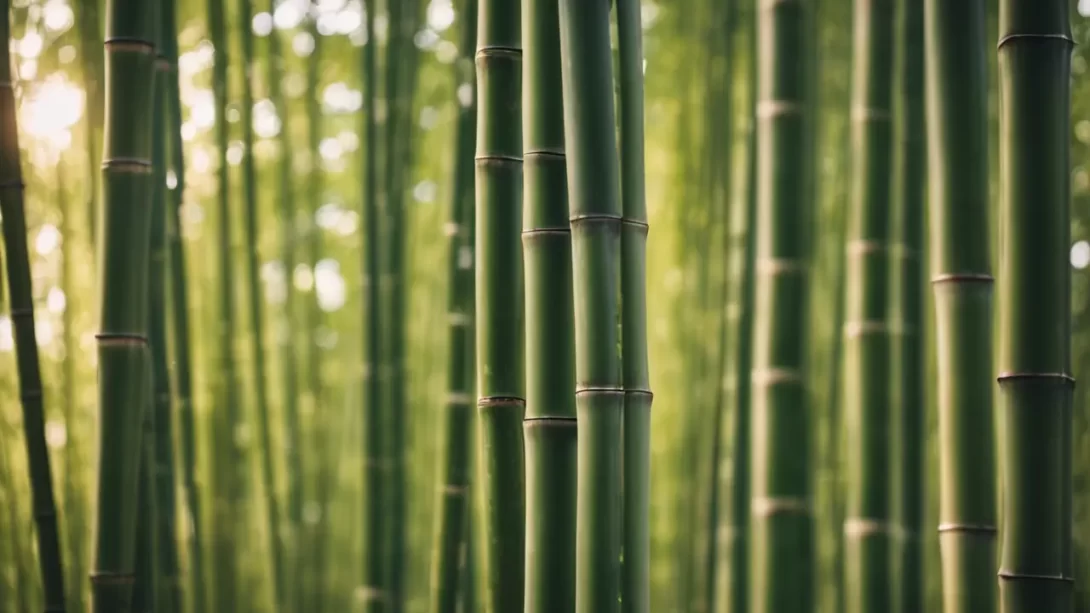Bamboo is celebrated for its versatility and sustainability, making it a popular choice in construction, design, and manufacturing. However, with its increasing use comes the question of its safety, particularly regarding flammability. Understanding the combustibility of bamboo is crucial for its safe and effective application in various domains. This article aims to delve into the burning characteristics of bamboo and address safety concerns related to its use.
Bamboo as a Material
Bamboo is a fast-growing grass with properties that often liken it to hardwood. Its natural structure is unique; it’s hollow and segmented, differing significantly from the solid makeup of traditional wood. This difference in density and composition impacts how bamboo responds to fire compared to other materials. Bamboo’s rapid growth and renewable nature have made it a favored material in sustainable building, but its inherent properties necessitate a closer look at its combustibility and the implications for its use.
The Combustibility of Bamboo
Bamboo, like all organic materials, is combustible. However, several factors influence its burn rate and intensity. Moisture content plays a significant role; dryer bamboo tends to burn more quickly and intensely. The age of the bamboo can also affect its flammability – older, drier bamboo poles are more prone to burning than younger, greener ones. In terms of burning characteristics, bamboo burns similarly to other woods, but its unique structure can lead to quicker ignition and faster burn time. This aspect is particularly important to consider in construction and design, where the material’s response to fire is a critical safety concern.
Safety Considerations with Bamboo
When using bamboo in construction and design, it’s essential to consider safety measures to mitigate its flammability. Although bamboo is a natural material with many benefits, its susceptibility to fire cannot be overlooked. To enhance safety, bamboo can be treated with fire-retardant chemicals that reduce its burn rate and improve its fire resistance. This treatment is especially important in construction applications where bamboo is used structurally or in interior settings.
Building codes and regulations may also dictate specific requirements for the use of bamboo, particularly in public or residential buildings. Compliance with these regulations is crucial for ensuring the safety of structures that incorporate bamboo. Additionally, understanding the conditions under which bamboo burns and incorporating fire-safe practices in design and construction can significantly enhance the overall safety of bamboo-based projects.
Bamboo in Fire-Prone Environments
The use of bamboo in areas prone to wildfires requires careful consideration. Bamboo’s natural tendency to burn quickly means that it could potentially contribute to the spread of fire in such environments. When used in landscaping or as part of outdoor structures in fire-prone areas, it’s vital to implement additional safety measures.
For instance, maintaining a buffer zone around bamboo groves and regularly clearing dry leaves and segments can reduce fire risk. In construction, choosing bamboo that has been properly treated with fire retardants is essential. For indoor use, combining bamboo with other, less flammable materials and ensuring that it is well away from direct heat sources or open flames can help mitigate risks.
Understanding how bamboo behaves in high-heat and fire situations is key to using it responsibly and safely. Whether for outdoor landscaping, building construction, or interior design, appropriate precautions and treatments are necessary to ensure that the use of bamboo does not inadvertently increase the risk of fire.
Advancements in Bamboo Treatment and Technology
Recent technological advancements have led to significant improvements in treating bamboo for enhanced fire resistance. These developments are crucial in expanding the safe use of bamboo in various applications, especially in construction. Modern fire-retardant treatments can penetrate deep into the bamboo, significantly reducing its natural tendency to burn quickly. These treatments not only improve safety but also retain the bamboo’s aesthetic and structural qualities.
The market now offers a range of fire-resistant bamboo products, from construction beams to decorative panels and flooring. These products undergo rigorous testing to meet fire safety standards, making them suitable for use in both residential and commercial buildings. The advancements in bamboo technology are a promising step towards combining sustainability with safety, making bamboo a more viable option in eco-conscious building projects.
Conclusion
Bamboo, while inherently combustible, can be safely used in a variety of settings with the proper precautions and treatments. Its natural tendency to burn quickly can be mitigated through the use of fire retardants and adhering to safety practices, especially in construction and design. Understanding bamboo’s burning characteristics and the advancements in fire-resistant treatments is essential for anyone considering using this material.
The balance between bamboo’s environmental benefits and the need for safety is a crucial consideration in its use. As technology continues to advance, the potential for bamboo as a sustainable and safe building material grows. By making informed decisions and taking the necessary precautions, bamboo can be a valuable and responsible choice for construction and design projects, contributing to both aesthetic appeal and environmental sustainability.



